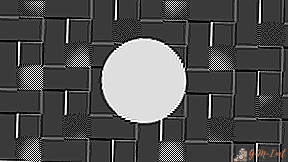 Sharpness of the monitor is an important parameter of the overall picture, which affects both eye health and the quality of the final image. Modern monitors, on laptops or personal computers, offer various variations of the settings (options) of this parameter, which allows each user to configure this parameter according to their personal preferences, or depending on the task. In any case, the variability of the settings - expands the possibilities of using a standard screen and it is important to perform the settings correctly!How to adjust the sharpness of the monitor? Let's talk about this in more detail!
Sharpness of the monitor is an important parameter of the overall picture, which affects both eye health and the quality of the final image. Modern monitors, on laptops or personal computers, offer various variations of the settings (options) of this parameter, which allows each user to configure this parameter according to their personal preferences, or depending on the task. In any case, the variability of the settings - expands the possibilities of using a standard screen and it is important to perform the settings correctly!How to adjust the sharpness of the monitor? Let's talk about this in more detail!
Image optimization
Internal image optimization contributes to sharpening, without the use of additional, mechanical tricks.By optimization, it is customary to understand the setting:
- Brightness. Brightness will be able to hide the natural blur, allows you to focus on general plans. Also, competent (correct) optimization of brightness can emphasize the positive effect of contrast and color reproduction.
 Contrast Contrast can compensate for some “jaggedness and blurring” of the image, by illuminating or darkening the transitions between objects in the image. The basis of this effect is a natural phenomenon, which is commonly called "reflection" - the ability of light rays (to bend around objects) to scatter in the air. Increasing or decreasing the contrast can "optimize" the image and make it clearer and more pleasant to the eye.
Contrast Contrast can compensate for some “jaggedness and blurring” of the image, by illuminating or darkening the transitions between objects in the image. The basis of this effect is a natural phenomenon, which is commonly called "reflection" - the ability of light rays (to bend around objects) to scatter in the air. Increasing or decreasing the contrast can "optimize" the image and make it clearer and more pleasant to the eye.- Color rendition. Color rendering is one of the most important optimization parameters. With its help, you can "saturate" the internal component of objects in the frame and visually reduce the transition between them, which can increase the clarity of the picture.
On modern monitors, there may be other parameters that will help overall optimization. Using them, you can reduce the "load" on the eyes, as well as improve the image, without using software methods. When working with them, it is recommended that you strictly follow the rules from the manufacturer. Such a recommendation will help you achieve quick setup and will be optimal for any user and type of monitor.
After the optimization has been carried out, you can proceed to the configuration itself through the operating system. Consider the Windows operating system as an example - the algorithm of actions is as follows:
- Start.
- Control Panel.
- Screen.
- Sharpness.
IMPORTANT. The procedure may differ in some versions of the Windows operating system. This is due to the high frequency of updates, however - you can always check the configuration information on the official Microsoft website or on the Internet.
The user will see a context window with the ability to change the sharpness. Just changing the position of the slider, you can change the characteristics of the image.
Three standard modes will be available at the user's choice, with the possibility of additional sharpening - these are the values:
- 0;
- 50;
- 100.
After choosing the optimal value, activate the “advanced settings” tab, you can make the desired changes, making the picture sharper or blurr. After that, you need to save your changes and the monitor is ready for use.
A general reboot of the system will not be superfluous, which will allow the system to make some internal changes to the algorithms for constructing graphics and images.


 Contrast Contrast can compensate for some “jaggedness and blurring” of the image, by illuminating or darkening the transitions between objects in the image. The basis of this effect is a natural phenomenon, which is commonly called "reflection" - the ability of light rays (to bend around objects) to scatter in the air. Increasing or decreasing the contrast can "optimize" the image and make it clearer and more pleasant to the eye.
Contrast Contrast can compensate for some “jaggedness and blurring” of the image, by illuminating or darkening the transitions between objects in the image. The basis of this effect is a natural phenomenon, which is commonly called "reflection" - the ability of light rays (to bend around objects) to scatter in the air. Increasing or decreasing the contrast can "optimize" the image and make it clearer and more pleasant to the eye.
Leave Your Comment